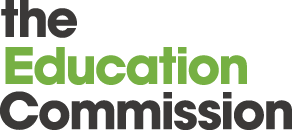In his new book The Third Wave, Steve Case writes that the Internet is now reaching its ‘Third Wave’ as Internet technology becomes embedded in traditional industries like retail, transportation, insurance, traffic and healthcare. So how should we think about the impact of the Internet’s Third Wave on education?
Distributing Digital Learning Content is not Learning
In the developed world, we are on a glide path to ubiquitous access to information. Nearly universal internet access and the advent of mobile computing has inspired hope and optimism within the global education community. But technologists often confuse access to digital learning content (driven by companies like Google, Khan Academy and Amazon) with the process of learning that enables students to benefit from engagement with all forms of academic content.
Access, as it turns out, is a relatively easy problem to solve. Consider the case of higher education’s short-lived infatuation with MOOCs (Massive Open Online Courses). The prospect of millions of students participating in lectures – free – from the world’s most elite institutions, some thought, would help a higher education system, in many ways, the envy of the world – to realize its democratic promise. But with completion rates hovering around just 10%, the MOOCs accelerated boom-to-bust cycle now offers a cautionary tale
As it turns out, what teachers do every day is hard work and not easily reduced to simple software programs or digitizing a lecture or an analog textbook. The tailoring of teaching styles, emotional supports and dialogue with students are the heart of learning. Even the most sophisticated adaptive learning tools are poor substitutes for great teachers. To scale up great teaching, we need to focus at a much more granular level on how students learn.
The Power of Active Learning
Today, the most transformative education technologies are playing a supporting role to great teachers – enabling, in very large classes, a degree of interactivity and personalization once possible only in small seminars or classrooms. Education reformers often lament that lecture halls haven’t evolved in 100 years. In reality, teachers are deploying technology to implement flipped, blended and active learning modalities predicated on decades of research. Technology isn’t transforming the field; but it is enabling research-based practices to be implemented at scale – and it makes implementing these strategies easier and cheaper.
Here are some of the most important trends to watch from the Third Wave of education.
The ‘Fitbit’ Awareness Paradigm
Broadband access and the explosion of mobile computing is making it easy to measure activities that were, historically, almost impossible to capture – including how students learn. Fitbit is becoming more than just an interesting metaphor for what is possible in higher education. When people realize how infrequently they move, or how little they sleep, they begin to walk up the stairs or go to bed just a bit earlier. Data leads to awareness. And awareness leads users to adapt their behavior in positive ways. We are only beginning to understand the impact of such data on the design of systems when we view the data in aggregate.
In education, entrepreneurs often seem to take the opposite tack. Rather than start with the existing movements and practices of educators and students, they design tools to disrupt the practice of teaching or learning experiences. When institutions and professors shift their approach, they argue, the impact of technology will be transformative; if only faculty would step aside, technology could save education. However, now that we have the unprecedented ability to measure how great teachers teach, we should spend more time with faculty documenting and measuring what works and replicating that activity.
The Interactivity Paradigm
One of the most important lessons from the last 20 years of the Internet is that interactivity drives the most popular trends. From the success of AOL’s chat rooms in the 90s to the explosive use of social media today (Facebook, Twitter, Snapchat), all are based on enabling people to interact.
In the education world, we already know that student engagement can have a massive impact on outcomes. Active, flipped, or blended classrooms activate millennial learners who crave control over how they engage with material. Students are looking beyond the bookstore or library to YouTube or Amazon for online materials and study aids. Passive consumption of classes and content doesn’t square with the experience of ‘screenagers’ who came of age in the Internet era. Visionary teachers are capitalizing on the multitude of mobile devices in the classroom to capture attention and develop new modalities of teaching. Creating a more interactive path for students is not just an esoteric problem for the classroom, but the foundation for improving outcomes in schools.
Great Moments in the Classroom Matter
When I talk to academic leadership, they often share a similar concern. They are awash in data from online courses that can be used to inform instructional design and improve outcomes, but the brick-and-mortar classes that most of their students attend remain a black box.
Today, instructors are limited to rudimentary data from outdated digital tools, midterms, and assignments to understand how students are progressing. They have virtually no real-time data to understand not just whether, but how a student is engaging with the material. Is she asking questions? Why not? Did students pre-read materials before class? Are they collaborating after class?
Without the ability to understand student behavior, our professors are forced to teach without the most basic feedback mechanisms. In contrast, today’s online courses and emerging modalities are designed from the ground up to track student behavior, providing a competitive advantage and putting pressure on traditional higher education. Wifi and mobile computing should eviscerate the data gap between online and brick-and-mortar instruction.
Predictive Analytics
Recently, the use of predictive analytics has garnered well-deserved interest and attention in higher education. Colleges and universities are using academic data and profiles (demographics, financial information, and past performance) to approximate risk and identify cohorts of students in need of additional support. In education, we know a lot about who the students are and what they did historically, but very little about what they are actually doing now. We have models to predict outcomes but haven’t yet approached the equivalent of the clickstream data that transformed online commerce. Early analytics efforts are producing meaningful results, but the real transformation will not happen until real-time data on actual student behavior is introduced into the equation.
Enterprising professors are beginning to track the correlation between grades and positive behaviors such as note-taking or asking questions during class. When those behaviors are encouraged, failure rates drop by 80% and exam grades improve.
Institutions as diverse as the University of Michigan, Indian River State College in Florida, University of Ottawa, University of Kentucky and Trocaire College are leading the way in leveraging real-time data on student behaviors to identify where students are struggling and risk falling behind.
When faculty understand the concepts that generate the most confusion in real-time, they can tailor instruction to target areas of concern. University leaders can invest in digital content and resources that correlate with student success. Instructional designers can reflect on student activity patterns and create courseware that target student challenges and, most importantly, attention spans.
Revolutions Can Happen in Evolutionary Ways
We know that the interaction between faculty and students is the lynchpin of educational success. Faculty are in the best position to observe and influence student engagement, which research tells us is the number one determinant of a student’s success. For example, are students persevering through difficult content? Participating in class? Revisiting course material after class?
What’s most exciting about the transformation we are seeing in education is that the teacher remains at the heart of learning. By observing the art of teaching and science of learning, we can unlock the potential for the Third Wave in Education. Sometimes disruption comes from technology transforming human activity. Other times, simply using technology to pay closer attention to human activity yields a bigger disruption. They say what gets measured gets improved. By paying closer attention to great teaching, we stand to make powerful advances in how we understand and improve learning. I hope this is a recommendation that the Education Commission will put forward as they examine the latest research on teachers, technology and improved learning outcomes.
Fred Singer is an Internet pioneer and entrepreneur whose career and philanthropy have spanned a broad range of interests including media, arts, education, science and veteran affairs. Today, he serves as CEO of Echo360, a student engagement platform used by over 3 million students across the world.

